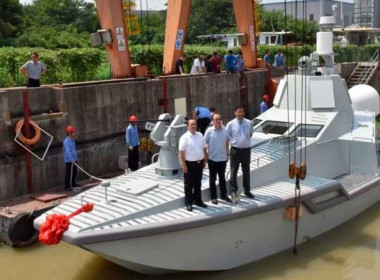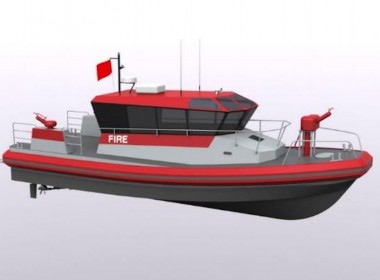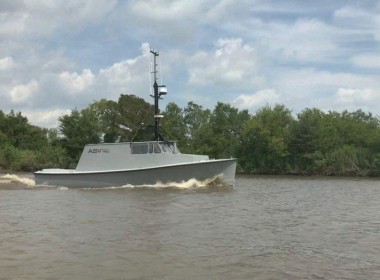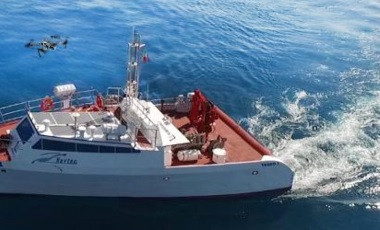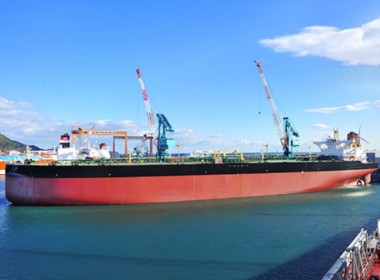VESSEL REVIEW | USV Inanibus – UK-designed unmanned vessel to conduct windfarm site surveys

UK-based unmanned surface vehicle (USV) manufacturer HydroSurv Unmanned Survey and marine technology specialist Sonardyne International have agreed to collaborate on a project that seeks to support clients in the offshore wind industry.
Under the project, one of HydroSurv’s USV will be paired with intelligent seafloor and vessel-mounted instruments from Sonardyne, alongside cloud-based services, to provide an end-to-end seabed-data-to-shore service. The instruments will include an ultra-short baseline (USBL) acoustic positioning system and hybrid acoustic-INS navigation instrument, which will provide navigational redundancy both for when GNSS is compromised and where DVL bottom lock is out of range.
Used in combination with Sonardyne’s seafloor sensors and access to cloud-based services, the package will provide an integrated suite of capabilities to maximise the use of USVs in remote offshore environments.
Key elements of the new project include a self-transiting USV, acoustic positioning of and data harvesting from seabed instruments, real-time gathering of geo-referenced current profile data, and live relay of information to operatives onshore through secure cloud-based systems. The project will also demonstrate the ability to overcome potential navigational limitations working in and around wind farms.
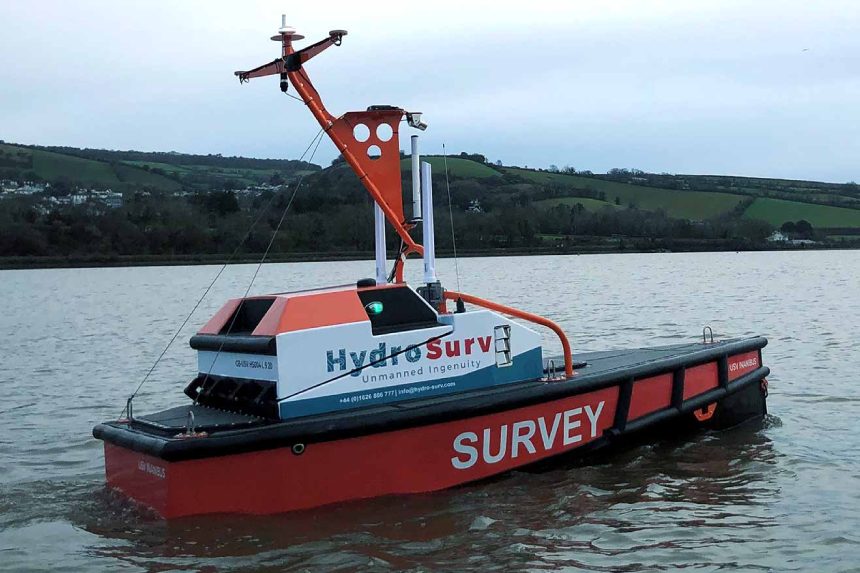
The USV chosen for the project was originally designed by HydroSurv to perform hydrographic and environmental survey work in open-water, tidal environments that demand greater endurance, sea-keeping, and performance than the smaller inland waterway-optimised USV in the HydroSurv range.
Like its inland waterway-optimised predecessor, the new USV also has an electric propulsion system but packs approximately 20 kWh of propulsion battery capacity alongside a separated 5.5kWh general service battery capacity.
The larger four- by two-metre craft is constructed of welded HDPE. The hull has been subdivided into five watertight compartments to ensure the vehicle remains damage-survivable with any single compartment on the vessel being breached.
Unlike the earlier USV, the newer craft has a monohull form that has been developed to maximise the waterline length with minimised stern proportions to reduce vertical motions in a following sea. The vessel also has a large central moonpool capable of carrying multi-sensor payloads to suit multi-mission requirements.
The USV has independently steered electric pod drives, which, when combined with differential thrust allocation, provide a manoeuvrable platform in various operating modes.
The USV is capable of being launched at remote worksites without the need for port and harbour infrastructure. It is also capable of providing day-works operations in open water from a land-based support vehicle.
| USV Inanibus | |
| SPECIFICATIONS | |
| Type of vessel: | USV – Survey |
| Owner: | HydroSurv Unmanned Survey, UK |
| Designer: | HydroSurv Unmanned Survey, UK |
| Builder: | HydroSurv Unmanned Survey, UK |
| Hull construction material: | HDPE |
| Length overall: | 4.0 metres |
| Beam: | 2.0 metres |
| Batteries: | 20 kWh |
| Other electronics: | Sonardyne International |
| Other equipment installed: | Moonpool |



